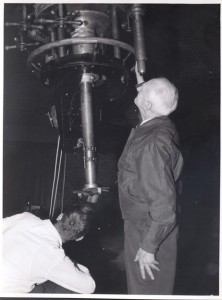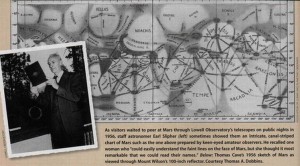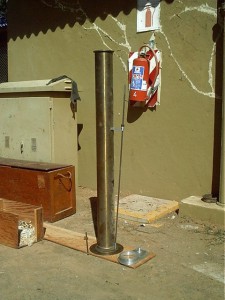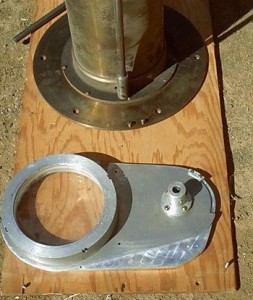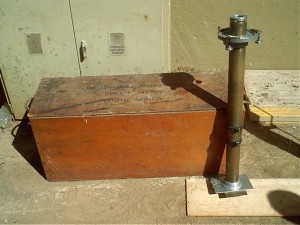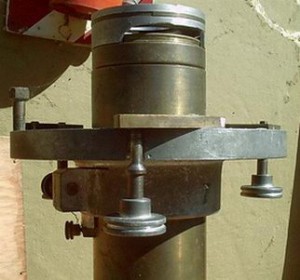|
INSTRUMENT: Cameras
|
|
Description: “Old” Astrometric Camera.Used alternatively with the Astrographic and Victoria Telescopes at the Cape Observatory. This was the main camera used for the CPC 50 project. The camera was “blue corrected,” with a 5 inch (12.7 cm) aperture and “80 inch (203.2 cm) focal length that is still attached to the Victoria Telescope” [Laing, p.30.] |
|
Description: “New” Astrometric Camera. Located at the Cape Observatory and mounted on Multiple Refractor Mounting (MRM). It was one of the main instruments used for the SRS project. This camera was yellow corrected. A narrow pass – band yellow filter is used which has a Taylor – Hobson 8 inch f/10 four component lens. |
|
Description: Photometric Cameras. Located at the Cape Observatory and mounted on Multiple Refractor Mounting (MRM). It was one of the main instruments used for the SRS project. This is a pair of cameras, each having Taylor – Hobson 5 inch f/7 four component lenses, one corrected for blue light, the other for yellow. |
|
Description: Scmidt camera (f/3.9).Used at the Cape Observatory, attached to the Elizabeth Telescope. Described as a pseudo-Scmidt camera covering a flat field of 2 x 2 degrees. |
|
Description: Baker – Nunn:This was a quick response camera / telescope unit, used at the Olifantsfontein Satelite Tracking Station to track and take photographs of Earth Satellites. |
|
Description: SIRIUS Camera.Used at Sutherland. (Simultaneous 3 colour Infrared Imager for Unbiased Surveys) functioning at J (1.25), H (1.65), and K (2.15) micron wavelengths. This camera is used on the 1.4-m alt – azimuth telescope dedicated to the Infrared Survey (IRSF). |
|
Description: Mars Cameras-In 1956 Mars was at a very favourable closest approach to Earth. The International Mars Committee established at Lowell Observatory decided observe the event at Lamont-Hussey observatory as Mars is always better to observe in the south at time of closest approach. Earl Slipher came out to South Africa with two camera’s specially made to photograph Mars. The one camera was longer than than the other. “In our observations two seperate cameras were employed, one adjusted for blue photographs amd magnifying about 200 times, and the other arranged for yellow orange ad red photographs magnifying about 260 times” Sources: Earl Slipher, a famous American astronomer came out to Lamont-Hussey Observatory in 1956 with two custom made telescopes for taking photo’s of Mars. Some of the best photographs of Mars prior to the space age were taken with this camera. When he departed the camera’s were left behind – forgotten – and rediscovered.
“Longer” Mars Camera Detail of the “longer” Mars camera. (Source: A.S.S.A. Symposium 2002: Paper 05 Penning: The Lamont-Hussey Observatory 1927- 1974
“Shorter” Mars Camera Detail of the “shorter” Mars camera. (Source: A.S.S.A. Symposium 2002: Paper 05 Penning: The Lamont-Hussey Observatory 1927- 1974)
|
|
Description: Dallmeyer PhotoheliographDuring the time of Stone‘s as director of the Cape Observatory he went on a quick visit to England in 1875. While he was there he was persuaded to assist in an international effort to monitor sunspots. As a result he brought back with him a De La Rue type photoheliograph made by Dallmeyer. With this instrument he intended to take two photographs of the Sun everyday. It was installed in a wooden hut with an attached darkroom. After an enthusiastic start of Observations on 12 February 1876 interest slowly waned and only a very few photographs were actually taken. Source: |
|

